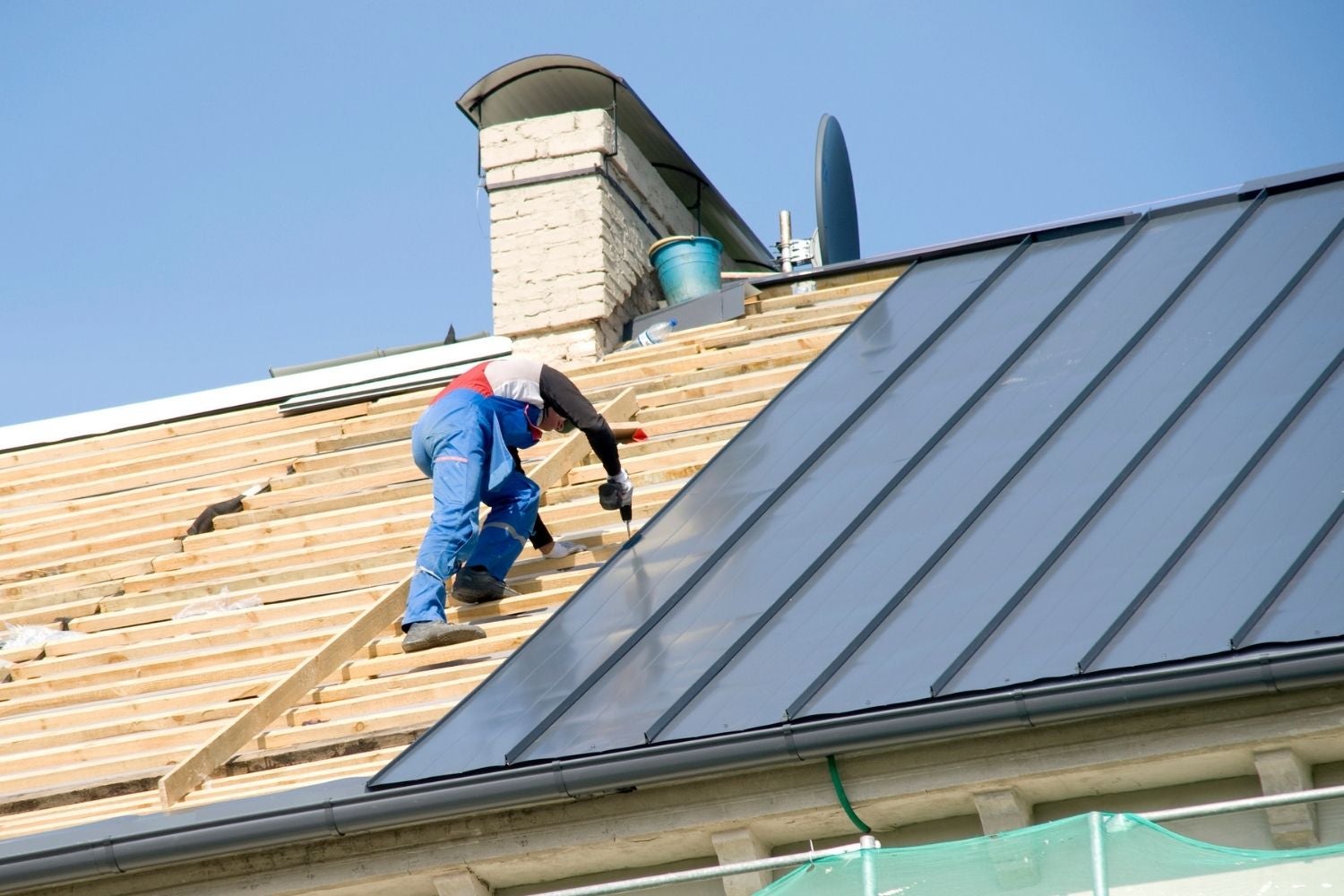Navigating Austin Roof Repair: Tips and Tricks for a Smooth Process
Wiki Article
Roofing System Repair Overview: Step-by-Step Solutions for Leaks, Damages, and Put On
Have you ever wondered if you could tackle roofing system repair services by yourself? Well, ask yourself say goodbye to! In the "Roof Repair Guide: Step-by-Step Solutions for Leaks, Damage, and Wear," we will unmask the concept that fixing your roofing is a expensive and difficult task. This comprehensive guide, created in a clear and succinct way, offers you with all the details you require to assess and address usual roofing system issues. With useful suggestions and easy-to-follow instructions, you'll learn how to locate and fix leakages, solution damaged roof shingles, and deal with wear and tear. Plus, we'll share upkeep tips to maintain your roof covering healthy and balanced and extend its lifespan. Prepare yourself to become your own roof repair specialist!Examining the Roofing Damage
Start by aesthetically analyzing your roof covering from the ground, looking for any kind of evident indications of damage such as missing or loosened tiles, split flashing, or sagging locations. Furthermore, inspect the gutters and downspouts for any kind of particles or blockages that could be causing water to back up and harm your roofing. Remember, it's vital to attend to roofing damage quickly to avoid more problems and safeguard the integrity of your home.Situating and Repairing Leakages
Are you having a hard time to find and repair leaks in your roofing? Situating and fixing leakages in your roofing can be a daunting task, yet with the appropriate strategy, you can successfully address the issue. By adhering to these actions, you can situate and fix leaks in your roofing system, guaranteeing the protection of your home.Repairing Damaged Tiles

Begin by eliminating the damaged shingle. Carefully raise the sides of the surrounding shingles and use a pry bar to loosen up the nails holding the harmed roof shingles in place. Once the nails are gotten rid of, glide the damaged shingle out from under the bordering roof shingles.
Next, prepare the area for the brand-new roof shingles. Clean off any type of debris or staying nails and make sure the surface is level and smooth. Apply roof cement to the area, using a putty knife to spread it equally.
Currently, it's time to set up the new shingle. Move it into location, aligning it with the surrounding tiles. Protect it with roof nails, ensuring to drive them right into the assigned nail line on the roof shingles.
Finally, secure the sides of the shingle with roof covering concrete to offer added defense versus leaks. Ravel the cement with the putty blade and permit it to completely dry.
Attending To Damage
To successfully address deterioration on your roof, begin by on a regular basis examining for indicators of wear and tear. With time, your roofing system can struggle with basic deterioration brought on by direct exposure to the elements. By carrying out regular inspections, you can determine any kind of areas that may need focus before they develop into larger problems.During your evaluations, seek signs of broken or missing out on tiles, as well as areas where the granules have used away - roof repair austin. These can suggest that your roof covering is nearing completion of its lifespan and may need to be replaced. Additionally, check for any type of drooping or irregular areas, as this might be an indication of underlying architectural issues
In addition to visual assessments, pay focus to any modifications in your roof covering's performance. It might be an indicator that your roof is no longer successfully keeping out moisture if you notice an increase in leaks or water discolorations on your ceilings. Addressing these issues without delay can help prevent more damages to your home.

Upkeep Tips for a Healthy Roof
For a healthy and balanced roof, routinely perform upkeep jobs such as cleaning up gutters and getting rid of debris. These basic activities can make a big difference in the life expectancy and general problem of your roof covering. When gutters are blocked with fallen leaves and various other particles, water can back up and seep under the shingles, creating damages to the roof framework. By cleaning your gutters a minimum of twice a year, you can stop this issue. Furthermore, getting rid of debris from your roof, such as fallen leaves, branches, and dust, is important. This particles can catch moisture and create a breeding place for mold and mildew and mildew, which can compromise the roof and lead to leakages. Regularly checking your roofing system for signs of damage, such as fractured or missing out on tiles, is also critical (austin roofing repair). Dealing with these issues quickly can avoid more damages and expensive repair work down the line. Lastly, cutting looming tree branches can help prevent damages from falling arm or legs and lower the threat of moss and algae development on your roof. By following these maintenance ideas, you can make certain a healthy and balanced and durable roof covering for several years ahead.Final Thought

In the "Roofing System Repair Service Guide: Step-by-Step Solutions for Leaks, Damage, and Put on," we will certainly unmask the theory that fixing your roofing is a difficult and pricey job. Begin by visually analyzing your roof from the ground, looking for any kind of apparent indications of damage such as missing or loose roof shingles, split flashing, or drooping areas. When rain gutters are obstructed with fallen leaves and various other particles, water can back up and seep under the roof shingles, creating damages to the roof covering structure. residential roof repair. Routinely inspecting your roofing for signs of damage, such as split or missing tiles, is also crucial.In final thought, by following this detailed overview, you can properly fix and evaluate roof damage, find and deal with leakages, address harmed tiles, and handle wear and tear
Report this wiki page